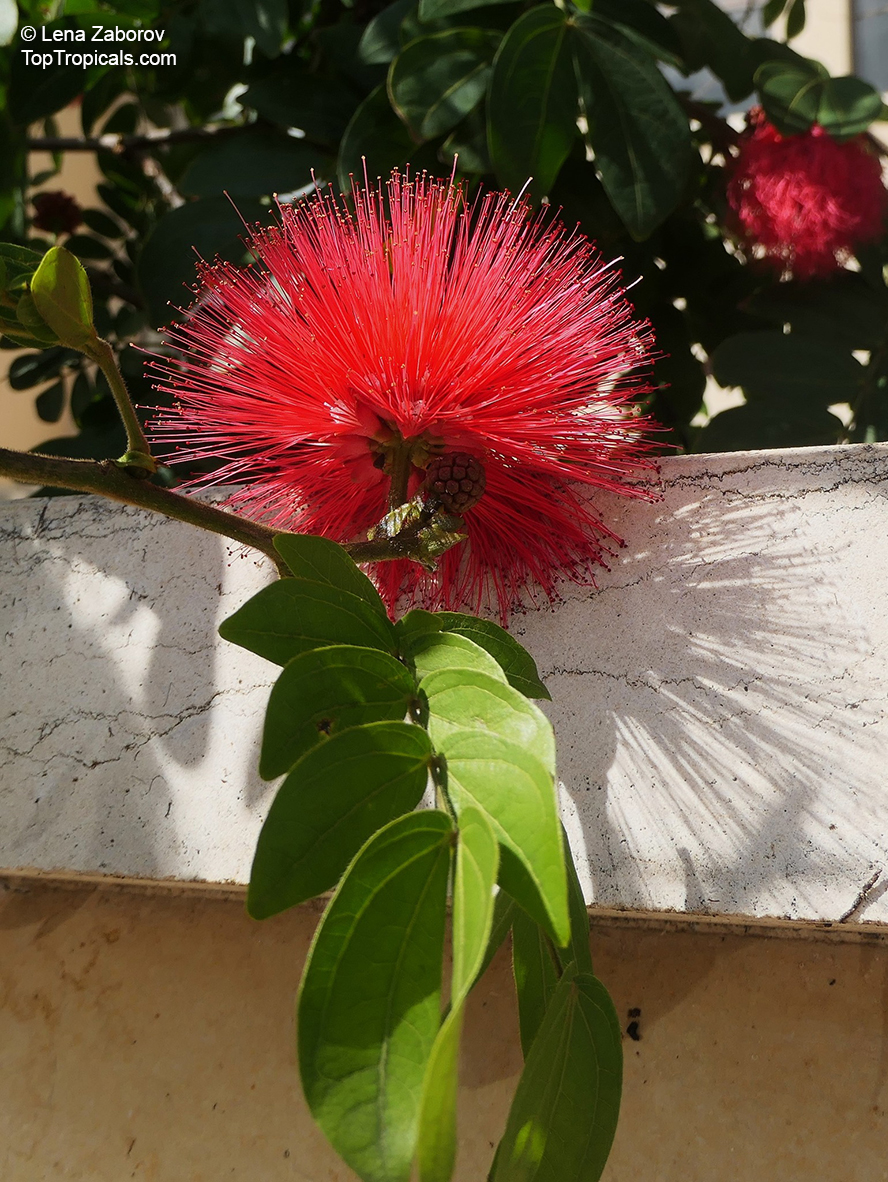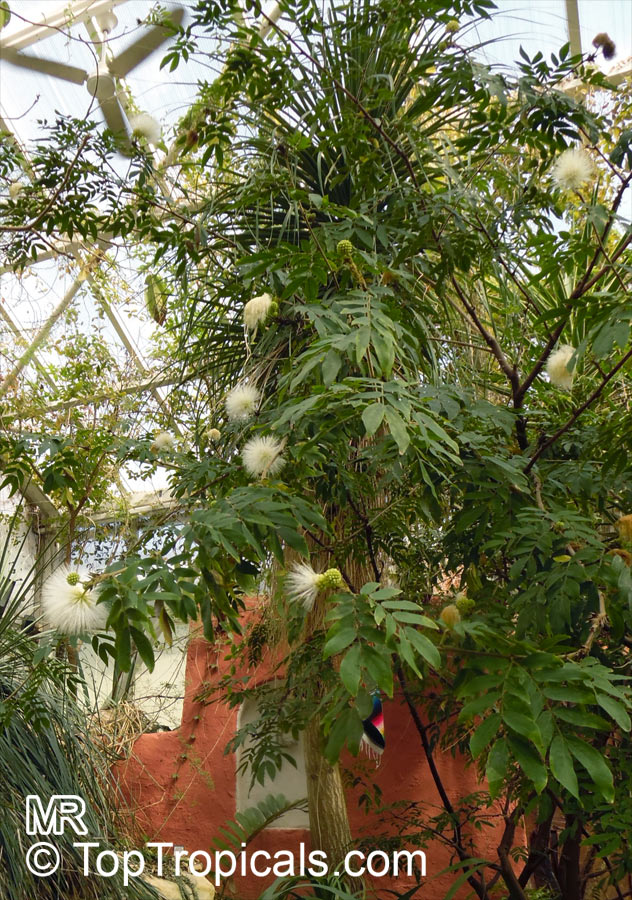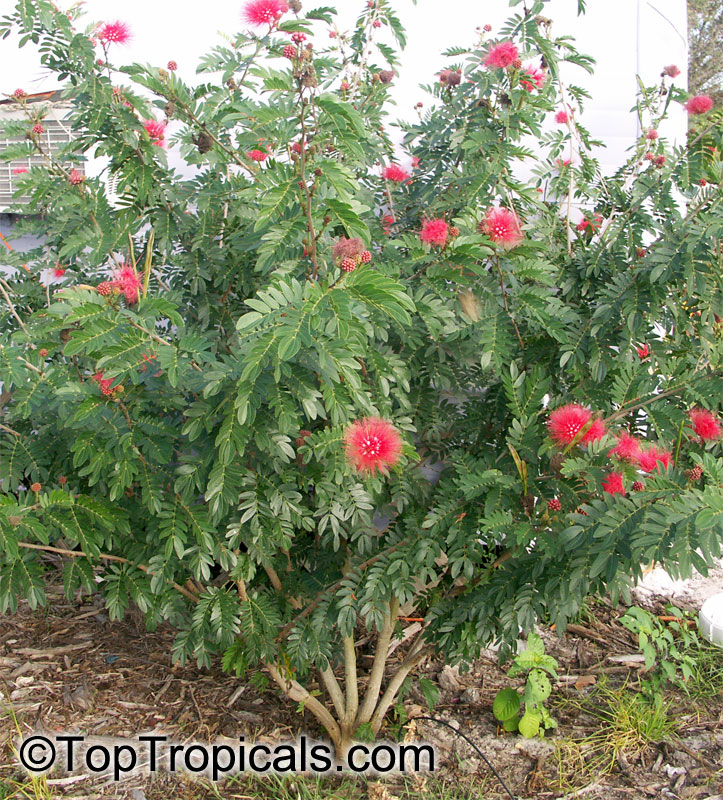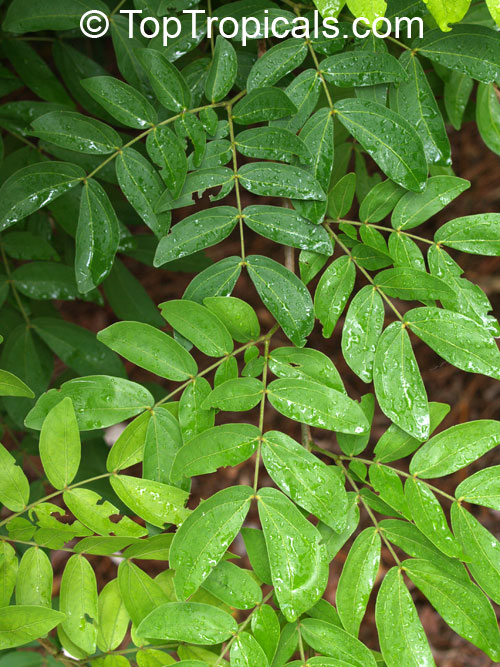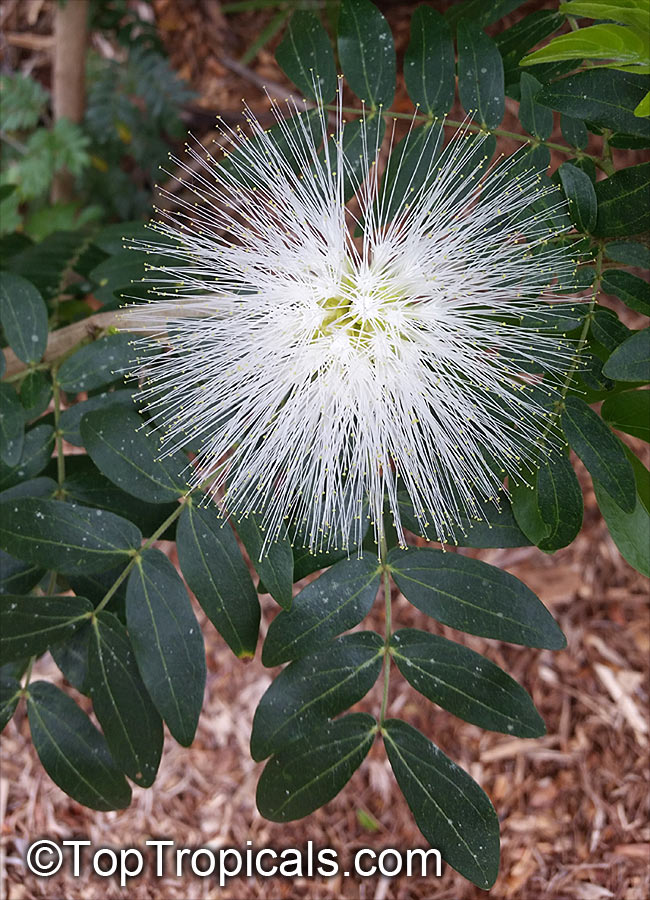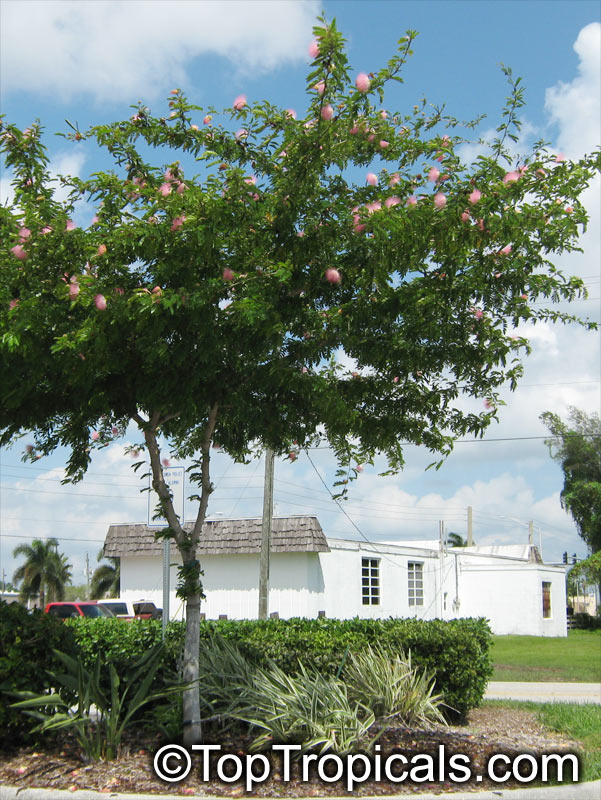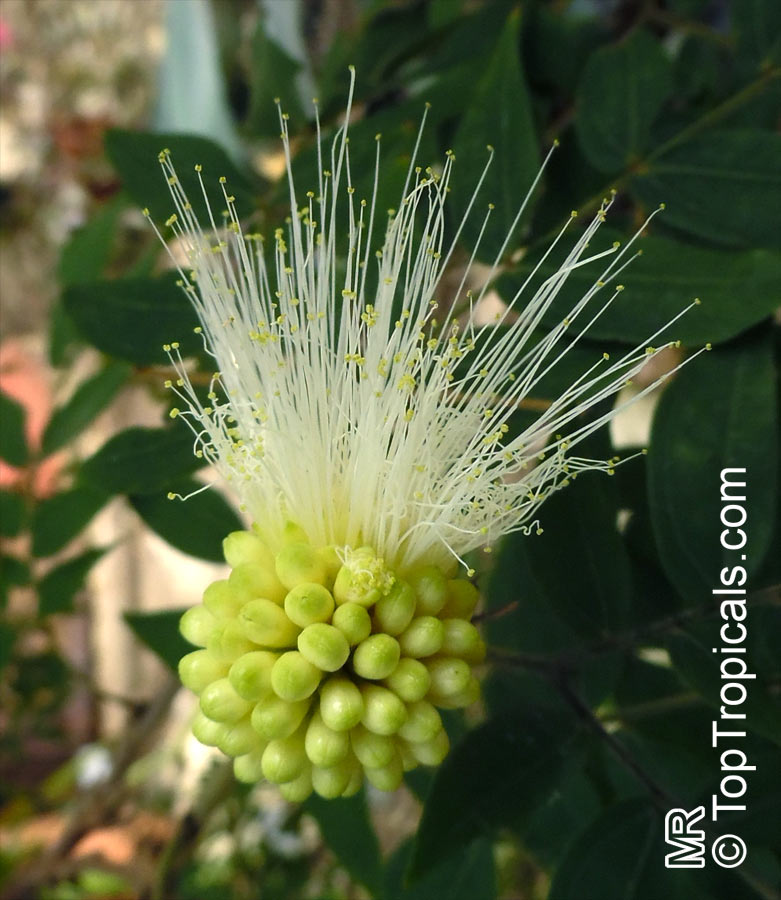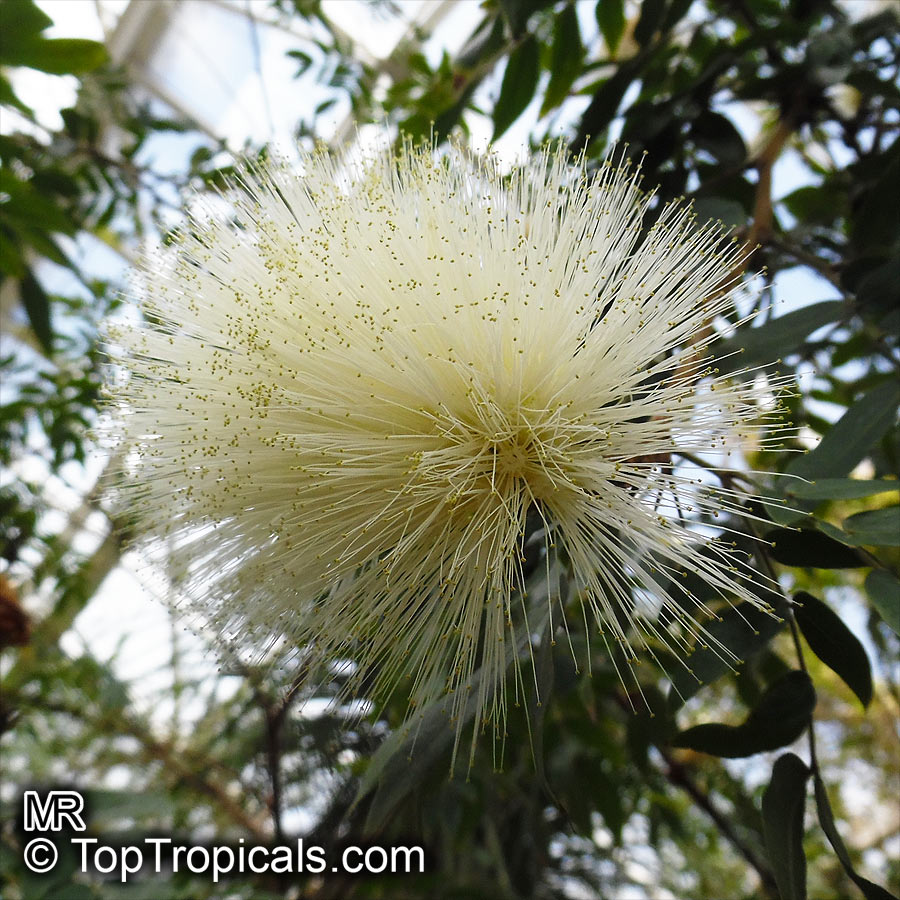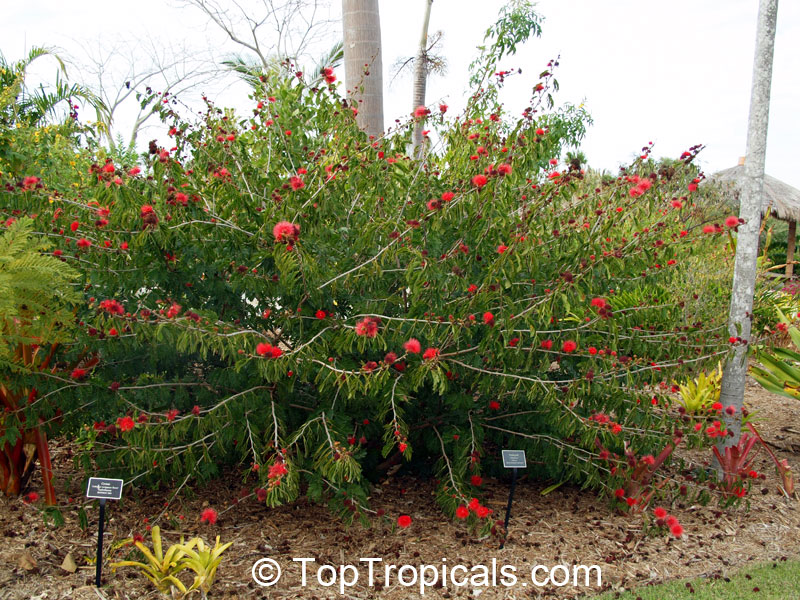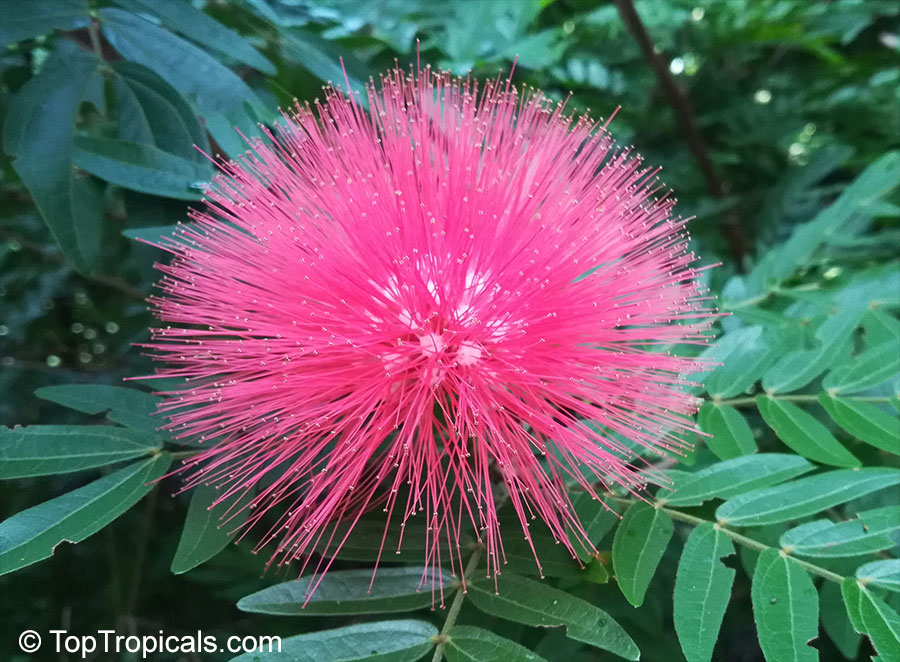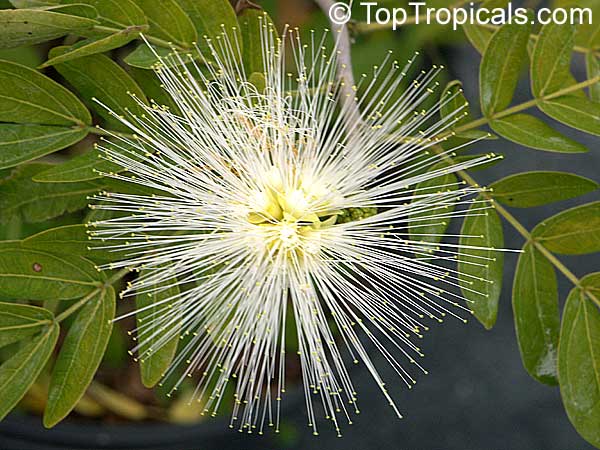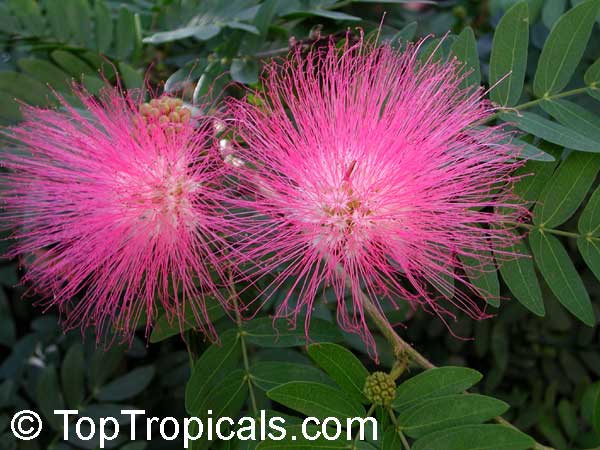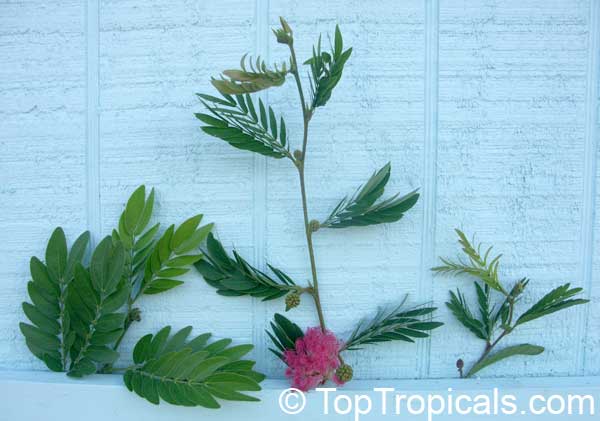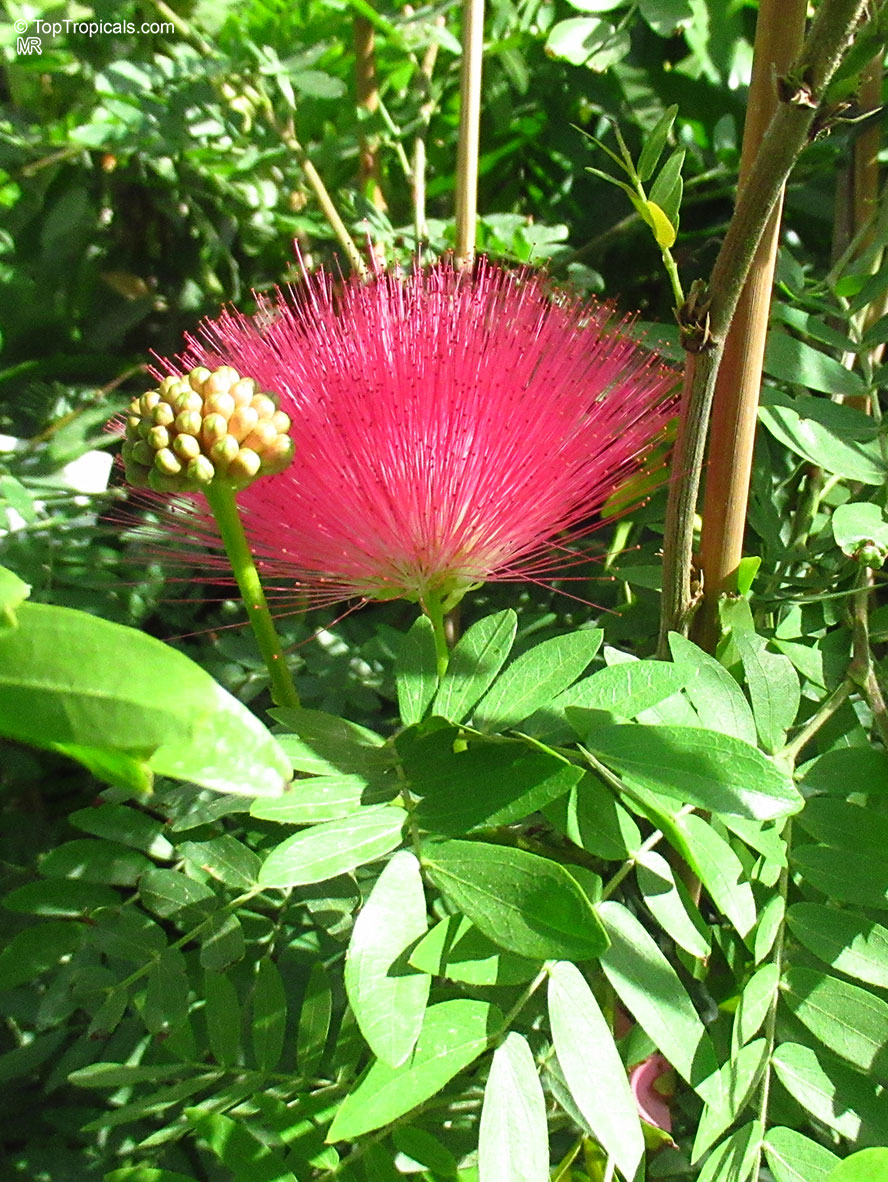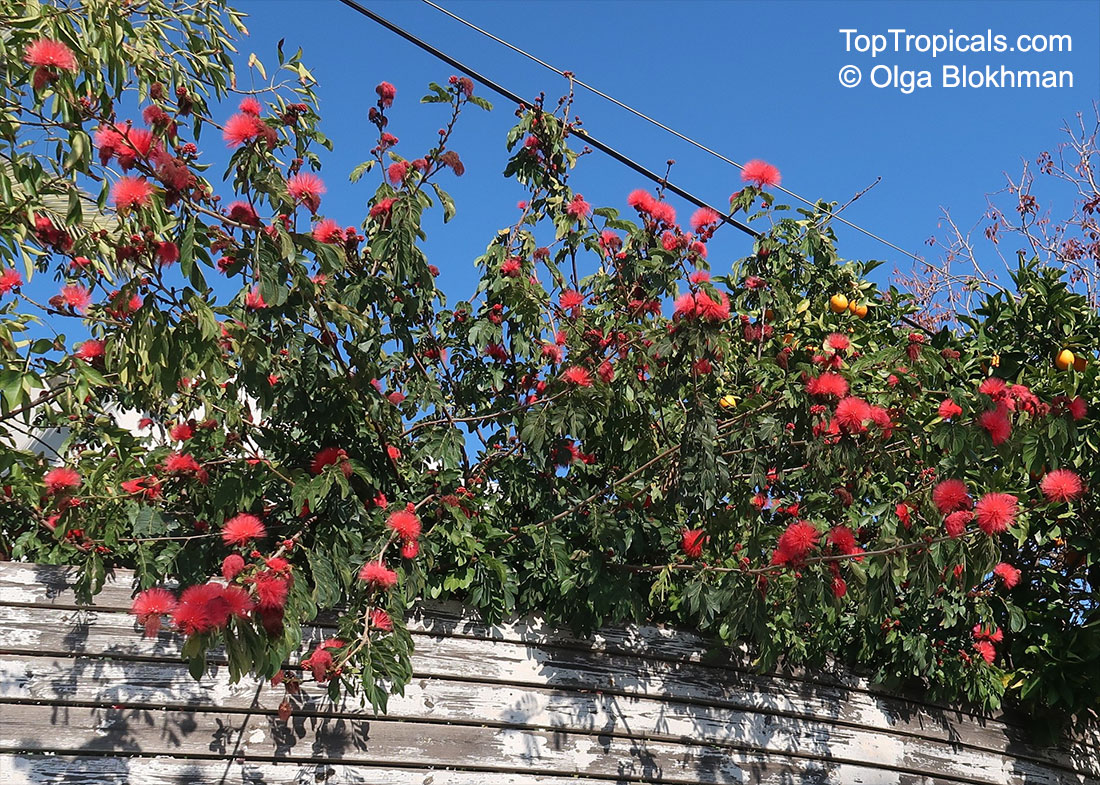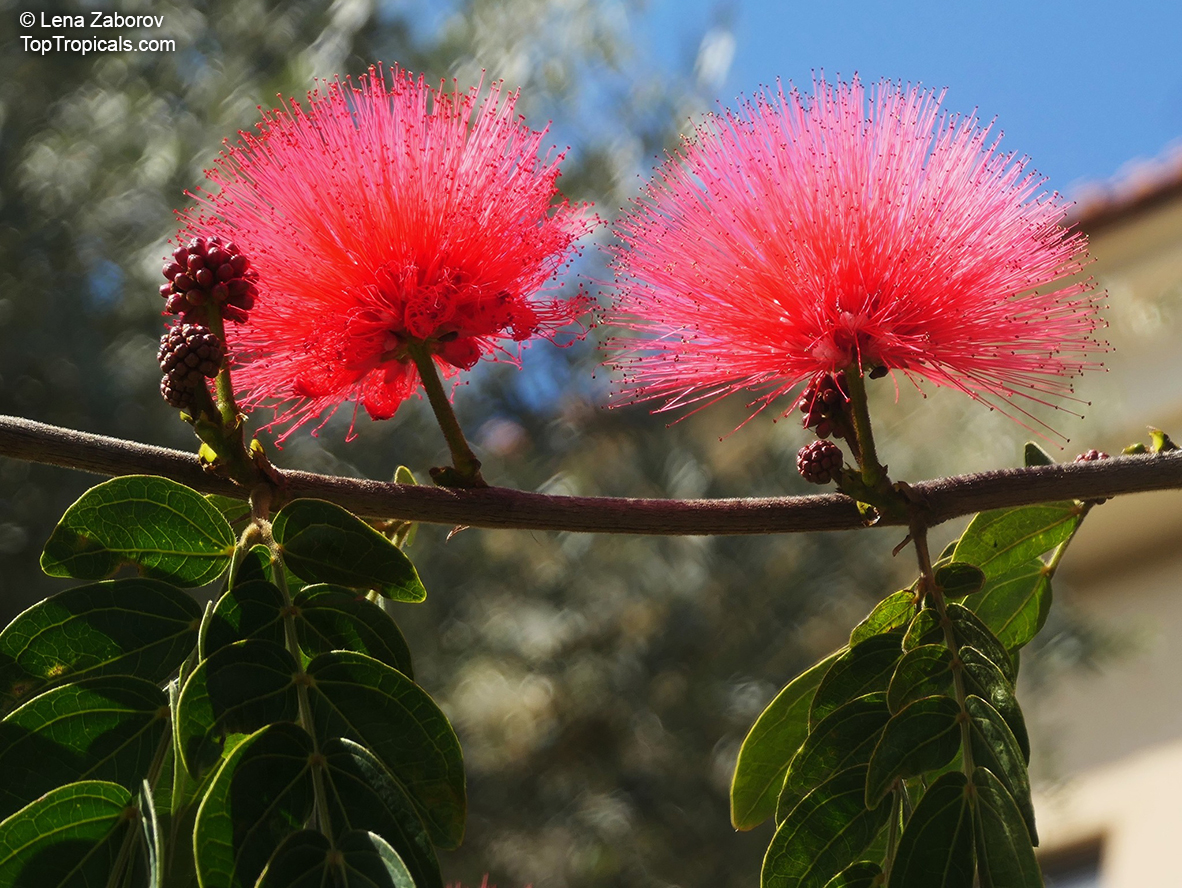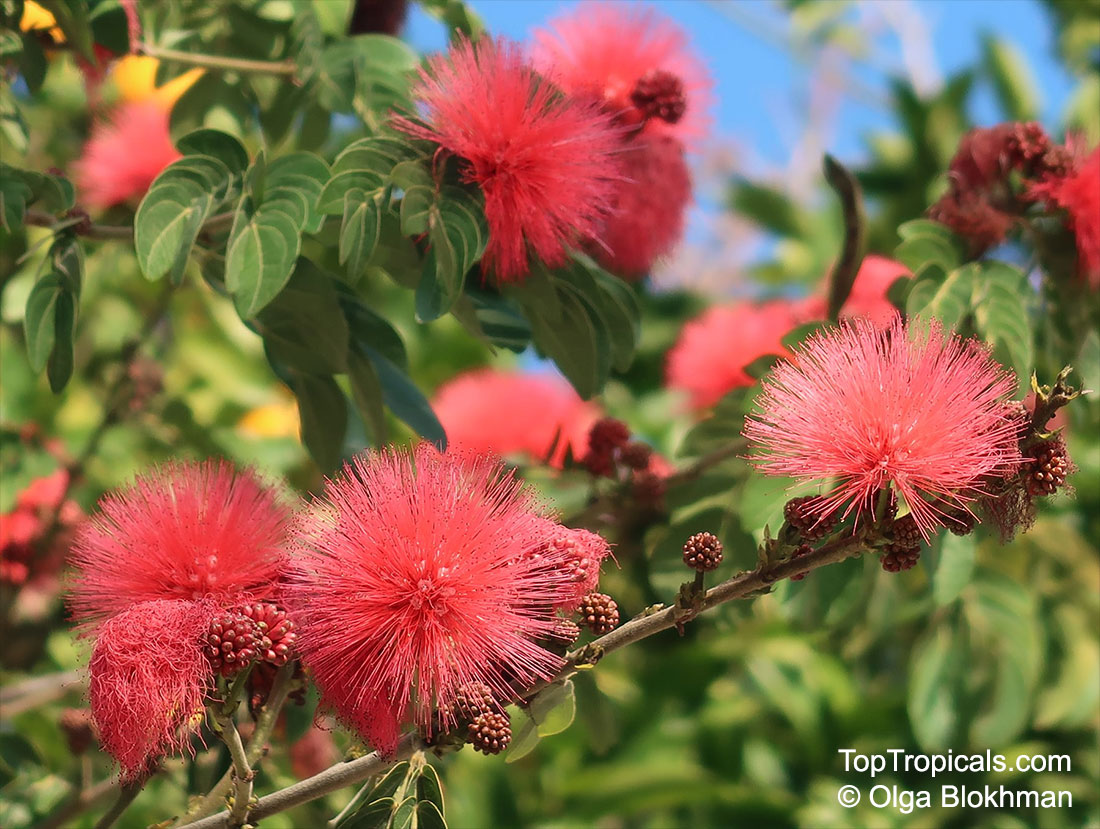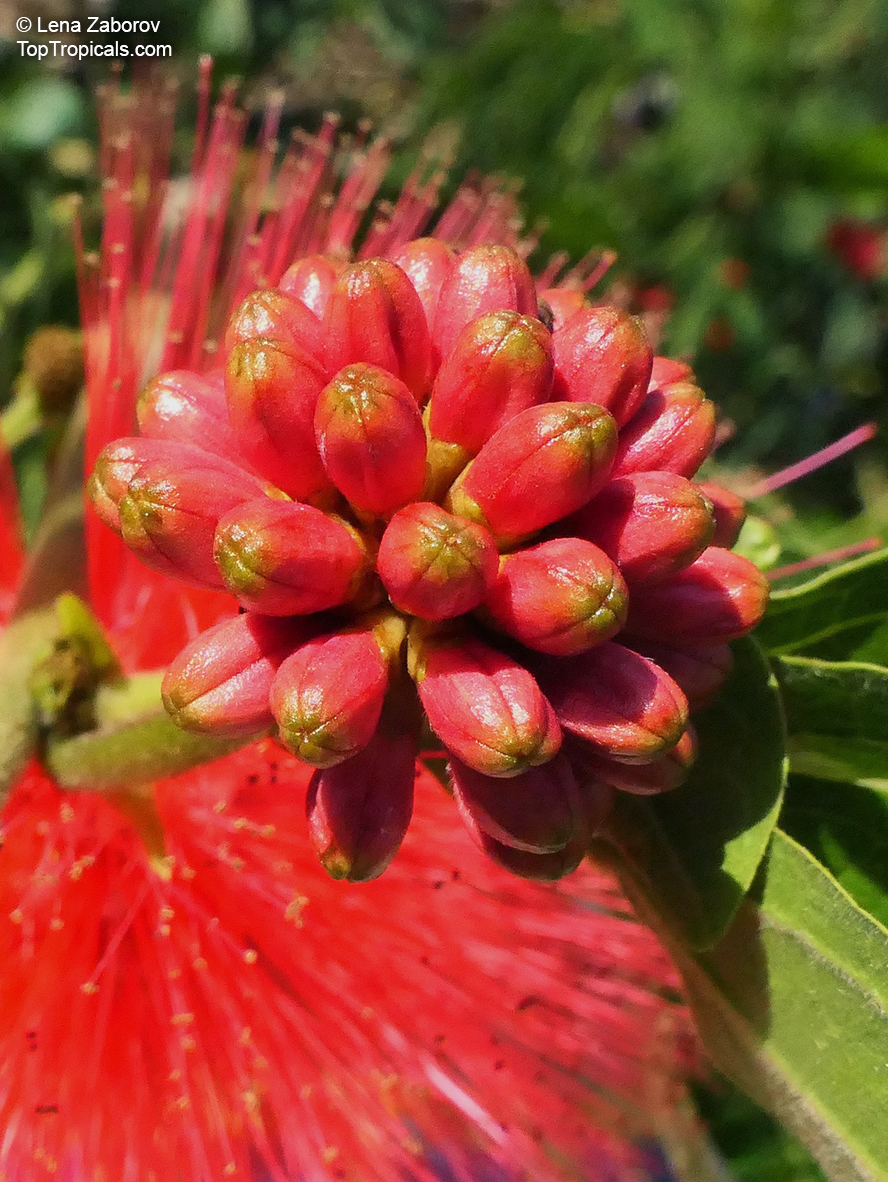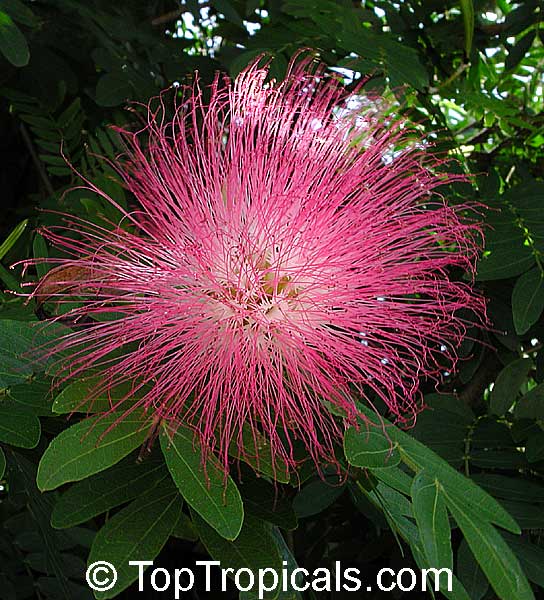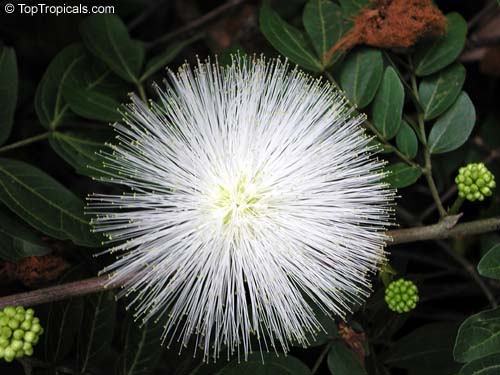Calliandra haematocephala (Rose cascade)
Top Tropicals Plant Encyclopedia
Botanical names: Calliandra haematocephala, Calliandra inaequilatera
Common names: Rose cascade, Blood Red Tassel Flower
Family: Fabaceae
Subfamily: Mimosoideae
Origin: Nicaragua to Ecuador







Calliandra haematocephala, commonly known as the Rose cascade, is a popular tropical plant native to Nicaragua to Ecuador. It grows as a large shrub 5 to 10 feet tall and can also reach heights of 10 to 20 feet as a small tree.
This plant prefers to grow in full sun and moderate water, although it can tolerate occasional periods of drought. Calliandra haematocephala boasts clusters of dense, pink, white or off-white or red, crimson or vinous flowers, which appear in winter and spring. The flowers measure 2 to 3 inches in size and look like big red or white puffs. This plant typically begins blooming in late winter and continues until late spring.
To ensure healthy growth, it is best to trim the Rose cascade after it finishes blooming. Fertilize twice a year with a balanced slow-release fertilizer and water regularly to keep the soil evenly moist but not soggy.
This plant can be grown in USDA Zones 9 to 11. In cold regions, this plant will thrive in pot. The pot should have drainage holes, and it is a good idea to place a layer of gravel at the bottom of the pot to ensure proper drainage. The pot should be brought indoors during the colder months to protect the plant from frost.
A hardy and beautiful cultivar, Calliandra haematocephala makes a reliable addition to any garden.
Calliandra means "beautiful stamens", and several of the approximately 150 shrubs and small trees belonging to this genus are grown for their dense heads of pink or white silky stamens that appear on short stalks along the upper sides of the branches. The species name haematocephala comes from the greek for with blood-red head.
Similar plants: Calliandra haematocephala (Rose cascade)
- Calliandra angustifolia (Bobinsana)
- Calliandra brevipes (Pink Powderpuff)
- Calliandra californica (Baja Fairy Duster)
- Calliandra calothyrsus (Cabello de Angel (Angels Hair))
- Calliandra haematocephala x surinamensis 'Nana' (Dwarf Powderpuff Tree)
- Calliandra houstoniana (Tree Calliandra)
- Calliandra parvifolia (Powderpuff)
- Calliandra riparia (Dwarf Powderpuff)
- Calliandra sp. (Powder Puff)
- Calliandra surinamensis (Surinam Powder Puff)
Recommended Fertilizer: SUNSHINE Megaflor - Bloom Nutrition Booster
Recommended Fertilizer: SUNSHINE Megaflor - Bloom Nutrition Booster
